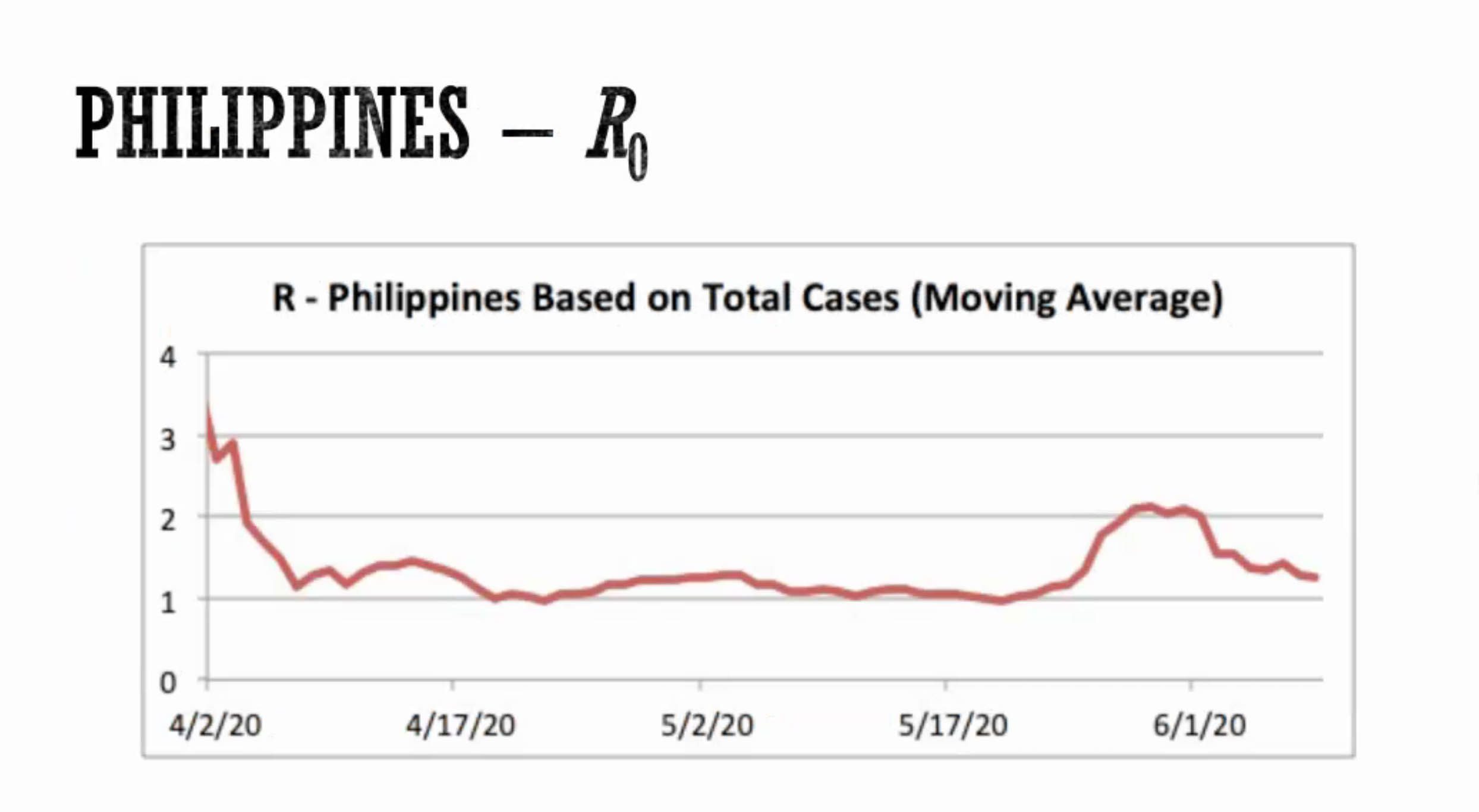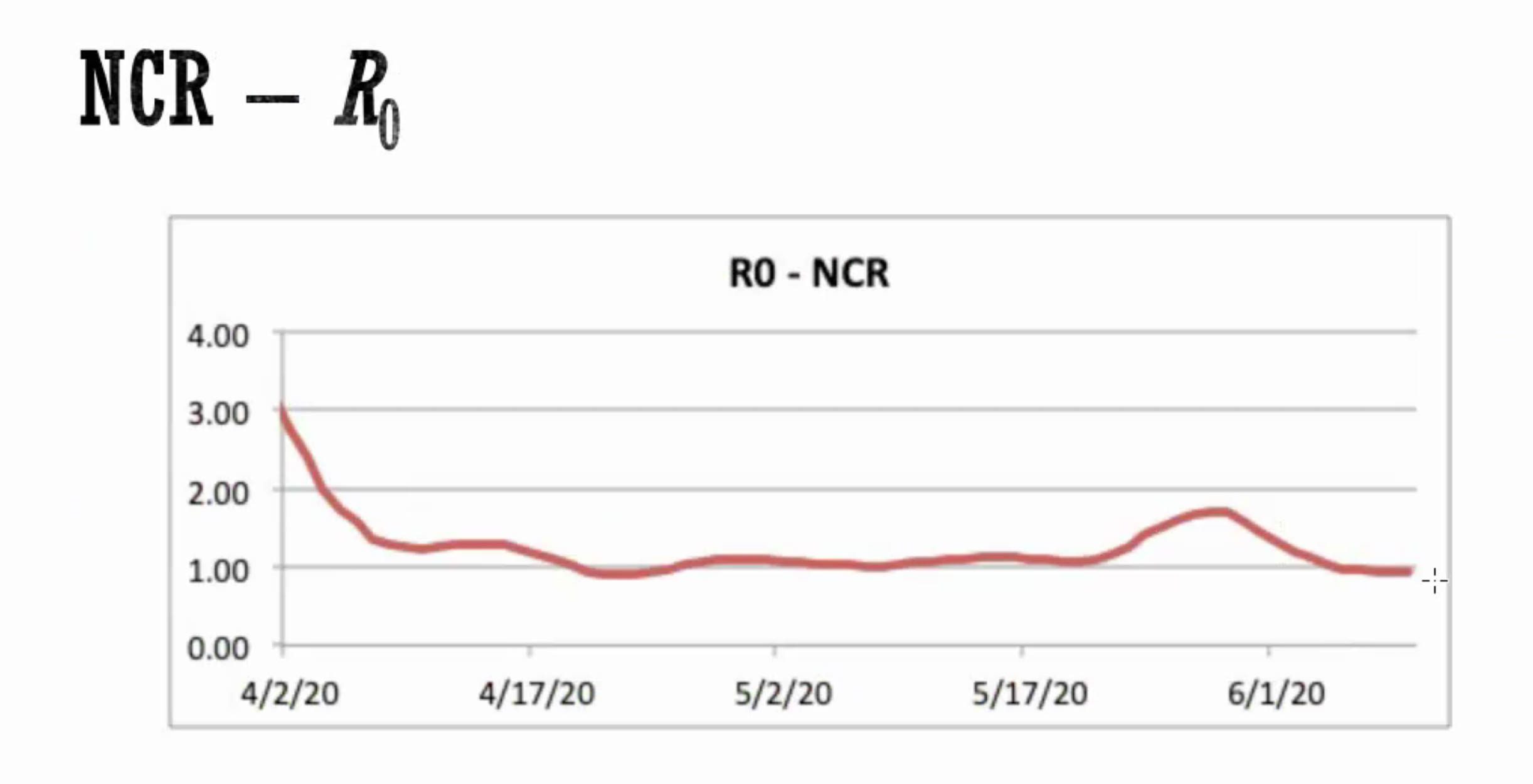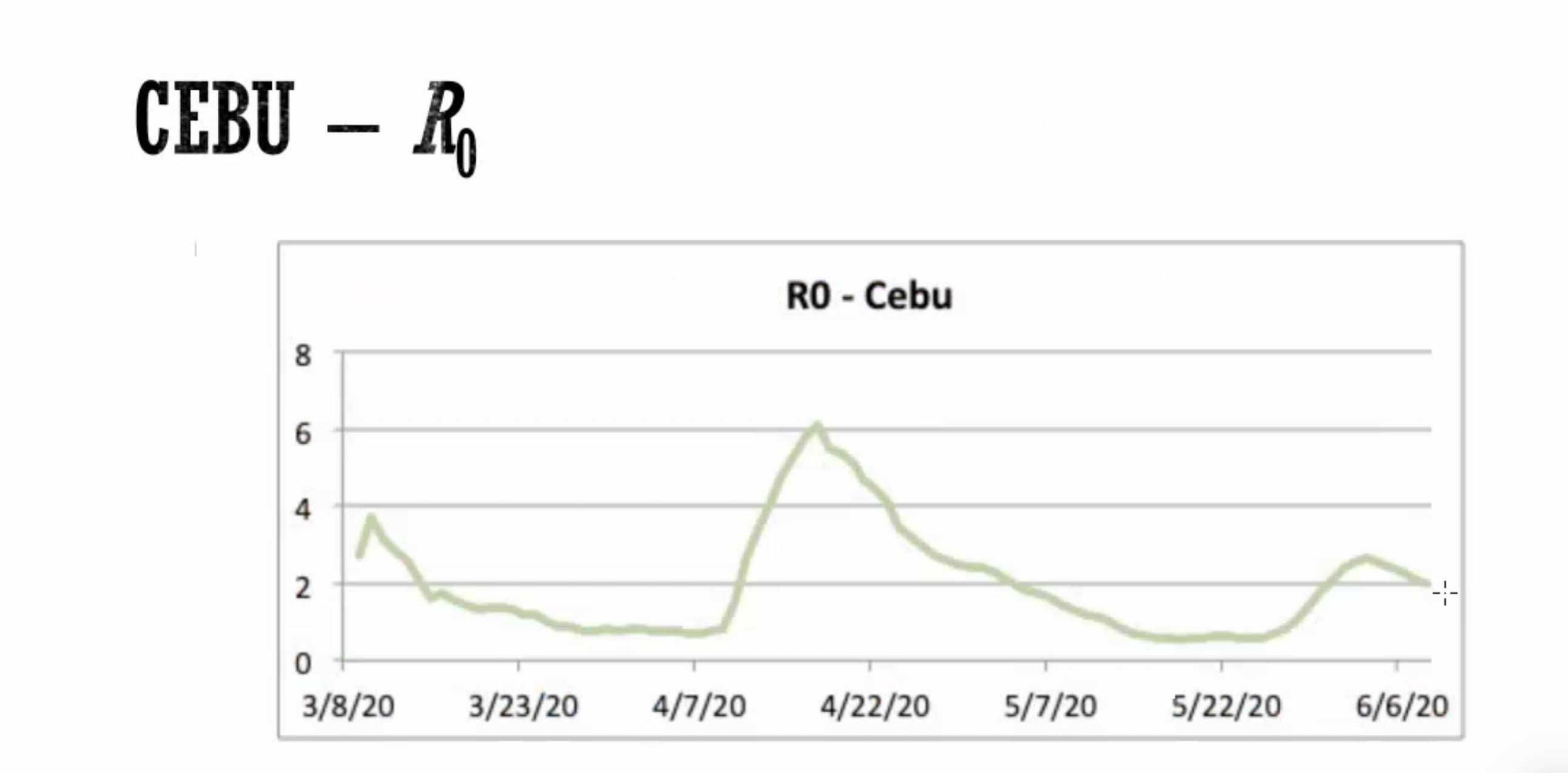SUMMARY
This is AI generated summarization, which may have errors. For context, always refer to the full article.

MANILA, Philippines (UPDATED) – Experts estimated the number of coronavirus cases in the country could shoot up to 40,000 by the end of June as the Philippines is still experiencing “significant” community transmission of the disease, 3 months into the pandemic.
Research from University of the Philippines mathematics professor Guido David and political science professor Ranjit Singh Rye, who were fellows of the OCTA Research group of experts, said current data shows the Philippines has a reproduction number (R) of 1.2, which means the pandemic is still spreading.
The reproduction number is the “transmission potential” of a disease or the number of people one positive case can infect. Experts urge countries to bring their R number below 1, which would indicate that an area has had the upperhand in containing the pandemic.
With the Philippines’ current R number at 1.2, David said cases in the country were projected to reach 40,000 by June 30, while deaths could reach 1,850. The number is based on current trends, David added, and can change depending on measures taken by the government.
In line with this, Rye urged against the further easing of quarantine restrictions across the country, as he emphasized government decisions should be based on evidence.
“If both national and local governments fail to provide a prompt and adequate response, all the societal and financial sacrifices of society could be wasted, and we will likely experience another wave,” the researchers said, adding this could undermine the country’s economic recovery.

The Philippines on Wednesday, June 10, recorded 23,732 confirmed coronavirus cases, including 1,027 deaths and 4,895 recoveries.
Zooming in: According to David, main “battlegrounds” for the coronavirus in the country include Metro Manila and Cebu, which continue to see a high concentration of cases. Aside from this, areas surrounding Metro Manila such as Calabarzon also need close watching as residents frequent the mega city.
In the capital region, David said the R number was estimated between .96 and 1.19 – a figure that could very easily rise again.

“While this is good news, this is not irreversible. Hangga’t andiyan pa yung virus, may chance na tataas ulit (As long as the virus is still present, there is a chance this could increase),” David emphasized during a briefing hosted by the Department of Health on Thursday.
Metro Manila, in particular, could see 16,500 cases and 1,070 deaths by the end of June based on the .96 estimated reproductive number.
Researchers noted the number could be even larger with 20,500 cases and 1,200 deaths estimated by the end of June if “uncategorized cases” – or cases where no region or residence is indicated – will be included in projections.
David and Rye likewise emphasized that officials should continue to watch Cebu closely, as it currently has an R number of almost 2 (1.96). This means that based on current trends, cases in Cebu province can reach 11,000 and 90 deaths by the end of the month.

“Without continued vigilance on the part of the government, private sector, civil society, and citizens, the continued relaxation of restrictions in the NCR and in Cebu may lead to the pandemic getting out of control,” the researchers said.
Why this matters. The threat of cases increasing in the Philippines is not one far off as the country previously had an R number of 2 at the end of May, David said, just as the capital region and other high risk areas started to ease restrictions and transition to a general community quarantine.
While the number has gone down, David said several factors like increased mobility, increased testing, and the close proximity of people in densely populated cities in Metro Manila all continue to contribute as factors that sustain community transmission.
David and Rye said that while there were several factors aside from health that needed to be considered when reopening the country, the public should still be vigilant and take note of the importance of practicing physical distancing as well as other health measures like frequent hand washing.
“What we do as individuals is as important, if not more important, than any government intervention,” Rye said. – Rappler.com
Add a comment
How does this make you feel?
There are no comments yet. Add your comment to start the conversation.